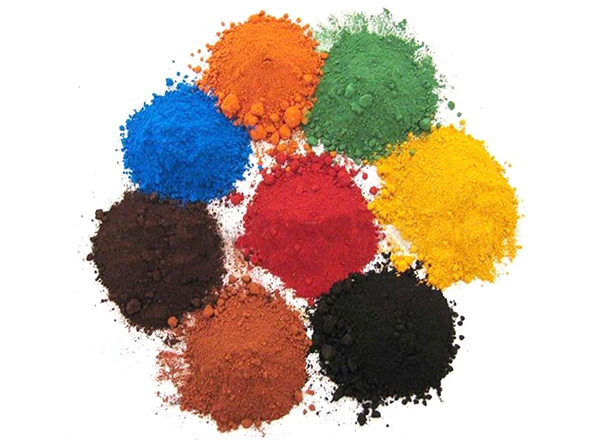Causes of chromatic aberration
- Different batches of pre-treated semi-finished fabrics have differences in fiber properties such as whiteness and hair effect, which cause color deviations in dyed fabrics.
- There are differences between different manufacturers or different batches of dyes from the same manufacturer, resulting in color difference.
- Improper selection of color matching dyes, failure to follow the principle of same color matching, close color matching, and less color matching, the dyeing synchronization is poor, the color reproducibility is reduced, and the dyeing shade deviation is caused.
- Improper control of dyeing process conditions is the main cause of shade deviation.

- Dyeing temperature is the key factor affecting shade. For example, reactive dyes are very sensitive to dyeing temperature. For example, when the dyeing temperature is high, the equilibrium dyeing percentage of X—GN and X—BR is relatively higher than that of other dyes. X—3B, X— 2B is relatively reduced, so that the color light deviation.
- Fluctuations in the pH value of the dye bath mainly affect the color fixation rate of reactive dyes, and the shade of some disperse dyes containing ester groups, amido groups, cyano groups, etc. when dyed at high temperature.
- The fluctuation of bath ratio in exhaust dyeing affects the reproducibility of shade. The dyeing of reactive dyes is more obvious, and generally the smaller the bath ratio is, the higher the color yield is.
- Influence of post-dyeing treatment: Peracid oxidation, soaping, whitening, resin finishing and other processes after fabric dyeing will affect the shade of the dyed fabric. In addition, dyeing materials and auxiliaries are stored for too long or are affected by water vapor, acidity and alkalinity, and oxidizing and reducing gases in the air, which may lead to color difference in dyeing; weighing errors, dyeing utensils, poor cleaning of pipelines, etc. It will also cause a certain color difference.

Non-Dye Shade Restoration
This kind of method is easy to operate, low in cost and good in quality.
- This method of water washing is suitable for color repair of dyed cloth with slightly darker shade, more floating color and poor water and soaping fastness. It is the easiest method in repairing. The floating color can be removed by washing with water, so as to achieve the purpose of correcting the shade that seems light.
Whether this method is applicable or not, generally check whether the soaping fastness in the physical test and the color change after soaping in the physical test are in line with the color repairing direction before color repairing. If so, this method can be used.
In addition, mastering the characteristics of color change of individual dyes in the process of washing and soaping can be applied to color correction. For example: when reactive yellow and blue dyes are blended with green dyes, according to the characteristics of reactive turquoise blue KNG and reactive turquoise blue KGL that are easy to fade after washing and soaping, the deviation of color light after green dyeing can be washed with water to improve the yellow light of the dyed finished cloth. The purpose of color correction can be achieved.
2.Alkaline washing This method is suitable for dyes sensitive to alkali to repair the shade. More reactive dyes can be used. For example, if the dyed cloth with reactive black KN-B color matching is blue, it can be washed by rolling an appropriate amount of caustic soda. The method of flat washing achieves the purpose of repairing and removing blue light.
Not all colors can be repaired by this method. For those dyed fabrics that are dark in color, dark in color, or still do not meet the standard sample after being changed to a lighter color, they can only be repaired by over-dyeing, stripping and re-dyeing, and changing to a darker color.
Dye coloring and back dyeing and repairing
When using this method for repair, you should try to choose a process that is easy to operate, low in cost, and of good quality.
- Dyeing does not need to have a lighter shade, but when the hue is basically the same, the original prescription can be used, and the dosage of the prescription can be determined according to the number of shades. And use the original process for color registration.
- The light shade is less, and the direct dyeing process can be used for color registration.
- When the shade depth is close but the hue is wrong, the principle of what is missing should be adopted.
- The shade is darker, but within the range of repairable color, the color should be stripped first and then over dyed and repaired.
Common peeling process and process examples are as follows:
Sulfur dye dyed fabrics can achieve satisfactory results through the sodium hypochlorite method, and reactive dye dyed fabrics can be stripped by insurance value method or sodium chlorate method, but the insurance powder method is not satisfied with the stripping of phthalocyanine structural dyes such as emerald blue KN-G , if two methods are used successively, satisfactory results can be achieved. The two methods are as follows:
- Hydrosulfite method: hydrosulfite 5g/L, caustic soda (360Cbe’) 15Ml/L, liquor ratio 1:20~30, temperature=40~900C, time=40min.
- Sodium hypochlorite method: available chlorine 5g/L, PH value 11, bath ratio 1:20~30, temperature = room temperature, time = 30min, then secondary water washing - pickling (acetic acid) dechlorination. ③When the shade is deep and cannot be repaired, it can only be changed to a darker color.
Precautions for Shade Restoration
- When repairing with direct dyes, the dosage should generally be controlled below 1g/L, so as not to affect the color fastness of the finished fabric after repairing.
- When the color light is repaired, not only the color conforms to the standard sample, but also the strength, width, color brightness and dyeing fastness of the fabric after repair must meet the standards.




